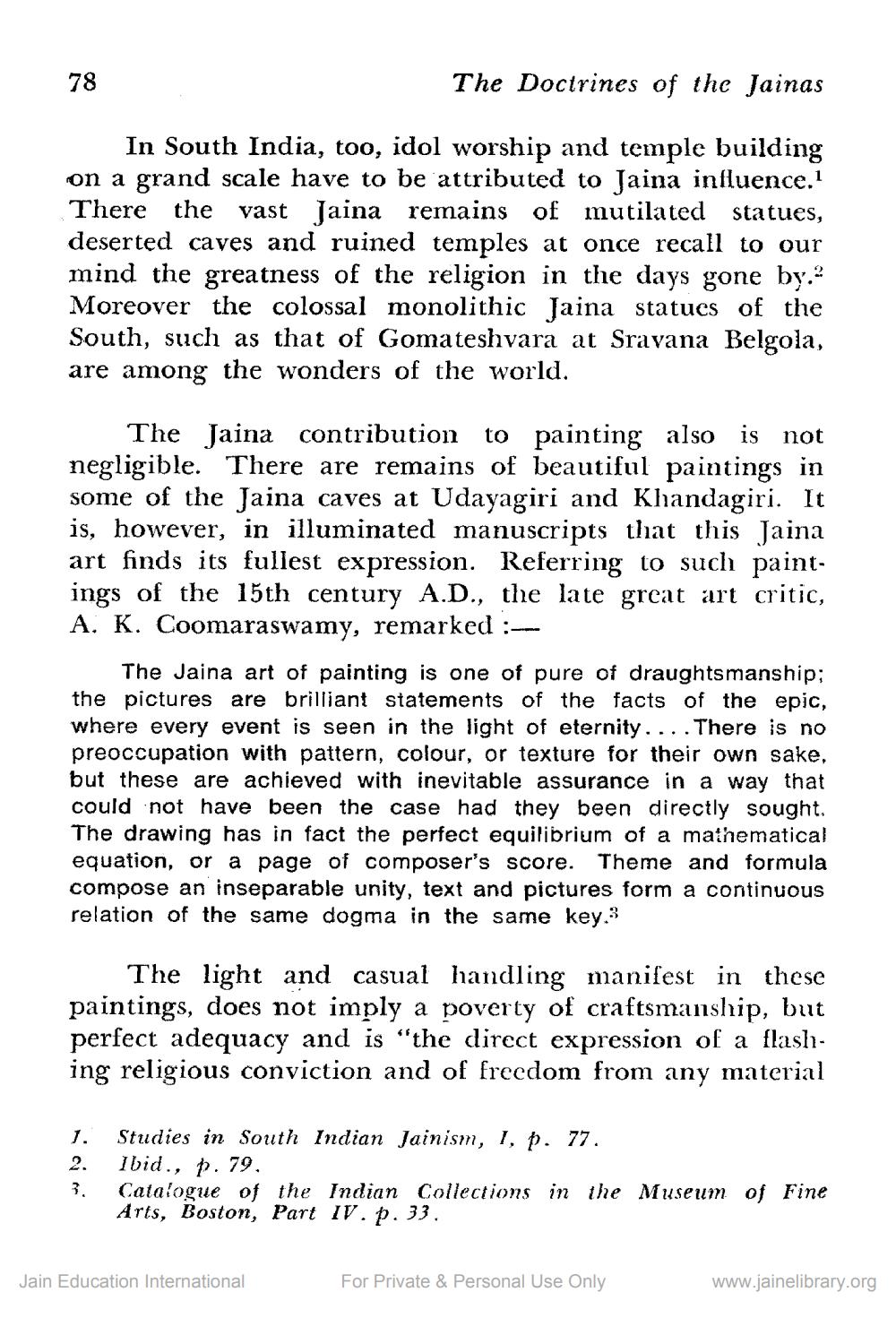________________
The Doctrines of the Jainas
In South India, too, idol worship and temple building on a grand scale have to be attributed to Jaina influence.1 There the vast Jaina remains of mutilated statues, deserted caves and ruined temples at once recall to our mind the greatness of the religion in the days gone by.2 Moreover the colossal monolithic Jaina statues of the South, such as that of Gomateshvara at Sravana Belgola, are among the wonders of the world.
78
The Jaina contribution to painting also is not negligible. There are remains of beautiful paintings in some of the Jaina caves at Udayagiri and Khandagiri. It is, however, in illuminated manuscripts that this Jaina art finds its fullest expression. Referring to such paintings of the 15th century A.D., the late great art critic, A. K. Coomaraswamy, remarked :---
The Jaina art of painting is one of pure of draughtsmanship; the pictures are brilliant statements of the facts of the epic, where every event is seen in the light of eternity....There is no preoccupation with pattern, colour, or texture for their own sake, but these are achieved with inevitable assurance in a way that could not have been the case had they been directly sought. The drawing has in fact the perfect equilibrium of a mathematical equation, or a page of composer's score. Theme and formula compose an inseparable unity, text and pictures form a continuous relation of the same dogma in the same key.3
The light and casual handling manifest in these paintings, does not imply a poverty of craftsmanship, but perfect adequacy and is "the direct expression of a flashing religious conviction and of freedom from any material
1. Studies in South Indian Jainism, I, p. 77.
2.
Ibid., p. 79.
3.
Catalogue of the Indian Collections in the Museum of Fine Arts, Boston, Part IV. p. 33.
Jain Education International
For Private & Personal Use Only
www.jainelibrary.org




